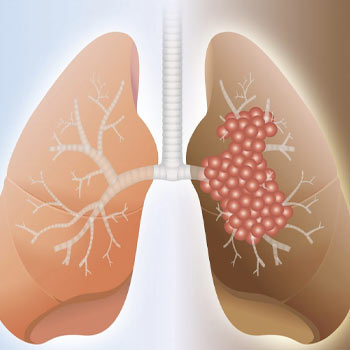Pulmonary fibrosis
- Home
- Services
- Pulmonology
- Pulmonary fibrosis
What is Pulmonary Fibrosis?
Pulmonary fibrosis is a chronic and progressive lung disease characterized by the thickening and scarring (fibrosis) of the lung tissue. This condition adversely affects the ability of the lungs to function properly, leading to symptoms such as persistent cough, shortness of breath, and fatigue. Understanding the mechanisms, causes, symptoms, and treatment options for pulmonary fibrosis is crucial for both patients and healthcare providers
How does Pulmonary Fibrosis develop at a mechanistic level?
Pulmonary fibrosis occurs when the lung tissue becomes damaged and scarred. Normally, the lungs have a delicate network of air sacs (alveoli) surrounded by tiny blood vessels. Oxygen passes through the thin walls of the air sacs into the bloodstream, while carbon dioxide moves from the bloodstream into the air sacs to be exhaled. In pulmonary fibrosis, this delicate lung tissue becomes thickened and stiff due to fibrosis, making it harder for oxygen to pass into the bloodstream

What are the primary causes of Pulmonary Fibrosis?
The exact cause of pulmonary fibrosis is often unknown, termed as idiopathic pulmonary fibrosis (IPF). However, several factors can contribute to the development of pulmonary fibrosis
Environmental Exposures
Inhalation of certain environmental and occupational pollutants such as silica dust, asbestos fibers, and agricultural dusts can lead to lung damage and fibrosis
Medications
Some medications, such as certain chemotherapy drugs and drugs used to treat heart arrhythmias, can cause lung damage and fibrosis as a side effect
Autoimmune Diseases
Conditions such as rheumatoid arthritis, systemic sclerosis, and sarcoidosis can cause inflammation and scarring in various organs, including the lungs
Genetic Factors
In some cases, genetic factors may predispose individuals to develop pulmonary fibrosis
What are the common signs of Pulmonary Fibrosis?
The symptoms of pulmonary fibrosis can vary from person to person, but commonly include
- Persistent dry cough
- Shortness of breath, especially during physical activity
- Fatigue
- Unexplained weight loss
- Aching muscles and joints
- Clubbing of fingers or toes (enlargement of the tips of the fingers or toes)
How is Pulmonary Fibrosis diagnosed?
Diagnosing pulmonary fibrosis typically involves a combination of medical history review, physical examination, imaging tests (such as chest X-rays and high-resolution CT scans), and pulmonary function tests (PFTs) to assess lung function and capacity
How can pulmonary fibrosis be treated effectively?
While there is no cure for pulmonary fibrosis, treatment aims to relieve symptoms, improve quality of life, and slow the progression of the disease. Treatment options may include
- Medications: Such as corticosteroids, immunosuppressants, and antifibrotic drugs like pirfenidone and nintedanib
- Oxygen Therapy: Supplemental oxygen may be prescribed to improve oxygen levels in the bloodstream
- Pulmonary Rehabilitation: Programs involving exercise training, education, and support can help patients manage symptoms and improve their overall health.
- Lung Transplant: In severe cases, lung transplantation may be considered for eligible candidates
What are the challenges of living with Pulmonary Fibrosis?
Living with pulmonary fibrosis requires ongoing medical monitoring and management. Patients are encouraged to
- Avoid exposure to lung irritants and pollutants
- Follow a healthy diet and exercise regimen
- Attend regular medical appointments and screenings
pulmonary fibrosis is a challenging lung condition characterized by progressive scarring of lung tissue, leading to impaired respiratory function and quality of life. Understanding its causes, symptoms, and treatment options is essential for patients, caregivers, and healthcare providers to effectively manage the disease and support those affected by it. Research into new therapies continues to offer hope for improved outcomes and quality of life for individuals living with pulmonary fibrosis.
